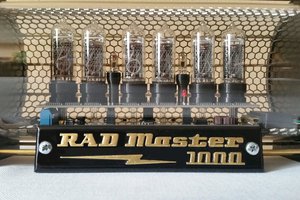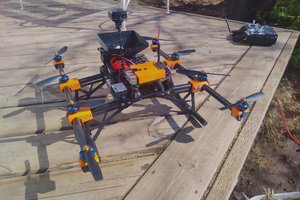Someone literally handed me this x-ray warning light and said it was either going to me or the landfill. What else could I do?
A solution looking for a problem; I guess this site and the Sci-Fi contest solves *that*. The idea of intensity spikes with radiation or radioactive particles comes from various particle physics demos I've seen over the years. Phillip Stearns also gets some of the credit via his chandelier, using smaller Soviet GM tubes:
http://www.boredpanda.com/chandelier-responds-to-radioactivity-installation-phillip-stearns/
The basic idea of my GM tube drive comes from a GM tube power supply I had to design at work, where I decided on using CCFL transformers. Where this design diverges is in how the logic/MPU power is handled with respect to the high voltage supply, and in that we're displaying the events qualitatively (and maybe even a bit artistically) rather than quantitatively (e.g. as counts per interval).
The Digispark-esque MPU board should be able to handle the processing requirements of this project.
True to the nature of upcycling in this project; the current batteries are reclaimed from a Sony laptop pack. They should be able to store enough charge to let this thing run for hours if I don't go too crazy with the HV supply.
 nrrdzilla
nrrdzilla
 core weaver
core weaver
 Dylan Radcliffe
Dylan Radcliffe

 Jarrett
Jarrett